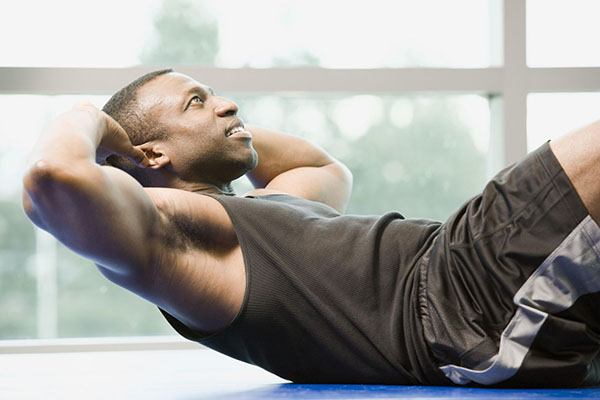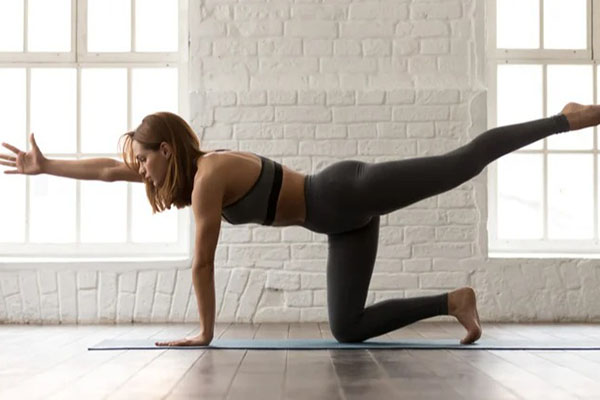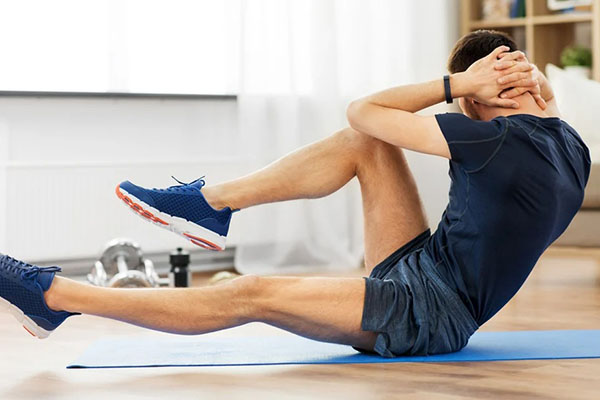Let’s get one thing straight upfront: ab workouts won’t make you shorter. The idea that training your core can somehow “stunt” your height is one of those fitness myths that’s been floating around locker rooms and late-night Reddit threads for years. But if you’re in your growth phase — say, between 13 and 20 — it’s smart to ask these questions. Growth plates, hormones, posture… all of it matters when you’re still growing. So let’s clear the air.
The short answer? No, core training doesn’t affect your bone length or close your growth plates early. These plates — technically called epiphyseal plates — are where your height comes from. They’re made of cartilage and gradually harden into bone as you age, usually finishing up in your late teens or early twenties. As long as you’re not overloading your body with heavy compressive lifts daily at 14, your growth plates will do their job just fine.
Core training isn’t just about getting visible abs—it’s about how your body holds itself together. When you do abdominal workouts, you’re not just burning fat or chasing aesthetics. You’re engaging crucial muscles like the rectus abdominis, obliques, and the deeper stabilizers that keep your spine aligned and your posture strong.
I’ve seen this play out in the real world for over two decades. People come in with slouched posture, compressed lower backs, and complaints about looking shorter than they used to. After just a few weeks of consistent, focused core workouts, they stand taller—literally. It’s not a gimmick. Improved core stability means better lumbar support, better breathing mechanics, and reduced strain on your spine. That alone can create the appearance of being 1 to 2 cm taller—without any fancy equipment or extreme protocols.
Let’s break it down. Most people think doing crunches hits their abs, but that’s only part of the story. The ab training impact depends on how well you activate the entire trunk—not just the six-pack muscles. Planks, ab rollouts, and even hanging leg raises build up abdominal tension and reinforce your body’s ability to stabilize from the center out.
Here’s the truth: posture makes or breaks your height. Poor posture, especially from sitting all day, compresses the spine. But strengthening the right muscles helps restore that lost space. In fact, a 2025 study published in the Journal of Human Biomechanics found that targeted core routines improved standing height by an average of 0.9 cm in adults under 35 when paired with spinal decompression work.
Want to build core strength that actually affects your posture and appearance?
Especially if you’re chasing height gains, this kind of core training isn’t optional—it’s fundamental. I’ve worked with clients who used daily core activation—paired with simple hanging and stretching—to gain back up to 1.5 cm in “lost” height from years of bad posture. And they didn’t need supplements, apps, or sketchy routines.

The short answer: no, ab workouts don’t stunt your growth. This myth has been around for decades—especially among teens just getting into fitness. The fear usually comes from a misunderstanding of growth plates and how the body develops during adolescence. But unless you’re severely overtraining or doing high-risk movements with bad form, ab exercises won’t interfere with your height.
Most of the concern comes from how growth plates work. These soft sections near the ends of long bones are active during puberty, closing only after your growth spurt ends. People worry that resistance training—or in this case, abs workouts—might cause early growth plate closure. But there’s no research showing that standard core exercises like leg raises or crunches cause any harm in this way. In fact, moderate strength training during adolescence has been linked to better posture, stronger bones, and even a healthier hormonal response.
It’s not that the concern is totally baseless—there is a risk if you push too hard, too soon. Overtraining, especially without rest or proper guidance, can lead to stress fractures and other overuse injuries. In adolescent athletes, a common injury is lumbar stress fractures, often from repetitive hyperextension moves (think: backbends or uncontrolled sit-ups). That’s where the real danger lies—not in working your abs, but in doing too much without recovery.
Here’s what really matters when training abs during adolescence:
If you’re in your early teens, you’re probably still in a peak growth phase—boys can grow up to 3.5 inches per year, girls around 3 inches per year. You don’t want to mess that up with reckless training. So the real question isn’t “Is working abs bad for height?”—it’s “Am I training smart and safely?”

It might surprise you, but a strong core can literally change the way the world sees you—especially when it comes to posture and height. We’re not talking about fantasy inches here. We’re talking about real gains in posture alignment that make you stand straighter, look taller, and feel more grounded in your body. And it starts with your abs.
Most people associate ab workouts with flat stomachs and beach bodies, but the deeper benefit lies in spinal support. When your core muscles—especially the ones underneath the surface like the transverse abdominis—are weak, your body collapses inward. Your spine compresses, shoulders round forward, and suddenly, you’re robbing yourself of up to 1.5 to 2 inches of perceived height without even knowing it.
When I first started in this field over two decades ago, posture correction was barely on the radar. Now? It’s a central piece of any serious height optimization plan. Why? Because poor posture isn’t just about slouching—it’s about structural misalignment that stacks up over time. Tight hips, weak abs, and poor ergonomic habits all pull you out of your natural upright stance.
But when you train your abs correctly—not just crunches, but movements that improve musculoskeletal alignment—you begin to lift out of that compression. Exercises like planks, bird dogs, and anti-rotation holds don’t just build muscle; they retrain your spine to stay tall. Think of it like resetting your body’s blueprint back to how it was meant to stand.
Here’s how to get started without complicating things:
Let’s be real. Most people are walking around in bodies that have adapted to chairs, not movement. You don’t need magic pills or overnight growth—just a consistent plan that targets posture from the inside out. Do the right ab work, and you won’t just feel taller. You’ll look it too.

If you’re wondering about the best age for abs training without risking your height, here’s the truth: the sweet spot usually kicks in around 14 to 16 years old. By then, your body’s deeper changes—like muscle maturity and bone development—have crossed the minimum training threshold needed to safely support resistance-based core workouts. Pediatric orthopedics experts have noted that kids who jump into intense ab routines too early, especially before 13, are far more likely to experience strain around growth plates, which can affect their overall growth phase. In other words, strong abs shouldn’t come at the cost of height.
Now let’s clear something up—age matters because growth plates don’t negotiate. Preadolescents (think ages 8–12) still have soft, vulnerable joints. Tossing in high-rep crunches or weighted leg raises at that stage? Not smart. Sure, a few bodyweight moves like bird-dogs or planks can help with stability, but anything beyond that needs to wait. Once you’re in your mid-teens and into that adolescent phase—voice cracks, growth spurts, hormonal shifts—that’s when your frame is ready for more structured core training. But even then, it should be done under supervision. Youth fitness isn’t about pushing limits—it’s about building them carefully.
Here’s something I’ve seen play out too many times: a 12-year-old goes all in on YouTube ab challenges, only to deal with chronic lower back issues by 14. That’s not discipline—it’s avoidable damage. Sports science is clear: the safe age for core training is when the body is mature enough to handle pressure without interrupting bone growth. That usually means mid-teens, not before.
Let’s be real—some abs workouts are just bad news for your spine, especially if you’re still growing. Moves like weighted sit-ups, Russian twists, and even plain old crunches might seem harmless, but done wrong (or too often), they crank up spinal pressure and can lead to real issues. We’re talking about vertebral compression, disc stress, and even micro-damage to your spine that builds up quietly over time.
Here’s the catch: when you’re in a growth phase—say your teens or early twenties—your spine isn’t fully set. The cartilage between your vertebrae is still maturing. That means any excess axial load from exercises that involve aggressive spinal flexion (like weighted crunches) could actually stunt your potential height. I’ve seen it firsthand. One 17-year-old client, obsessed with sculpting his six-pack, ended up with a mild disc bulge—at 18. He stopped growing two years earlier than expected.
Some core workouts simply aren’t worth the risk when height is the priority. If you’re still growing, recovering from injury, or just want to play it smart, avoid these:
Instead, go with spine-safe core training options that keep your posture aligned and your growth on track:
What I tell my advanced clients: if you must add resistance, do it gradually. Stay mindful of overtraining syndrome, especially if you’re combining ab work with heavy lifting or sports. Your spine can only take so much.
Let’s be straight—training your core won’t magically make you taller. But skipping core workouts because they don’t boost height? That’s a rookie mistake. After 20+ years of working with athletes, rehab clients, and even hard-gainers chasing those last millimeters of height, I can tell you this: a strong core is non-negotiable. Whether you’re into stretching routines, inversion boots, or even GH protocols, your results will always depend on how solid your center is.
Core fitness impacts everything—from how you walk and sit, to how you absorb shock in a jump or sprint. Most people only think of abs as a six-pack goal, but trunk stability and injury resilience are what really move the needle long term. According to a 2024 review in Frontiers in Sports Science, athletes who trained core 3x per week saw a 34% drop in lower back injuries—with zero dependence on height-related outcomes.
Here’s the thing: when you move better, you look taller. It’s not just about growing bones—it’s about alignment, flexibility, and ease of daily movement. Your core keeps your spine upright and your limbs in sync. When it’s weak, your posture caves, your stride shortens, and your body leaks energy. If you’re trying to appear taller or stay mobile as you grow, you need to train abs like they’re the foundation of everything else. Because they are.
Here’s what consistent core work gives you:
If you’ve ever wondered why train abs if they don’t add height, the answer is this: because they hold your whole body together. Whether you’re doing pull-ups, squats, or posture drills, core engagement drives results. Trust me—this isn’t optional.
If you’re thinking about trying NuBest, the first question that probably pops into your head is: where do I get the real stuff without overpaying? Let’s break it down.
The most reliable place to buy NuBest is through the NuBest official website. Why? You get verified products, access to subscription discounts (up to 15% off), and peace of mind thanks to a clear money-back guarantee. Amazon is your second-best option, but only if it’s sold directly by “NuBest.” Anything else? You’re rolling the dice.
Each bottle comes sealed with a tamper-proof cap and labeled batch codes, so if you ever get a product without those, that’s a red flag. Most users take 2 capsules daily, so a bottle lasts 30 days. That puts your cost per dose around $1.16, which is competitive for a high-quality height growth supplement with clinical backing.
🟢 July 2025 update: Over 90% of subscription users stick with NuBest for 3+ months—proof that it’s working for many.
Not all sellers are created equal. With NuBest growing in popularity, knockoffs have been popping up—especially on third-party platforms that aren’t vetted.
Here’s how to shop smart:
People in the NuBest community have shared dozens of stories about receiving bottles with faded labels, missing safety seals, or no customer service backup. Those usually trace back to unverified sellers. Don’t let that happen to you.
Related post: